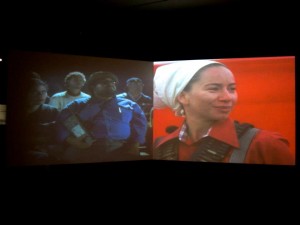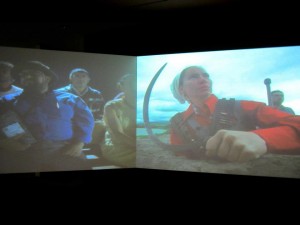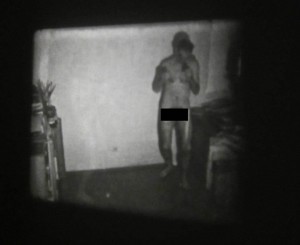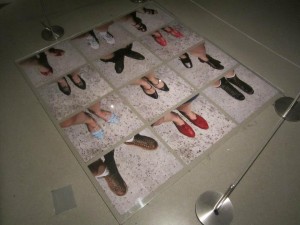Recently, MoMA purchased works by Andrea Fraser, Ion Grigorescu, Martha Rosler Sharon Hayes, Kader Attia, Dorit Margreiter and Deimantas Narkevinius for their media and performance-art collection. Performing Histories is the museum’s exhibition that showcases their newest acquisitions. These time-based pieces reveal subjective notions of history in both political and social narratives.


The first piece, Soldadera (Scenes from Un Banquete en Tetlapyac) was a two-channel video by the artist Andrea Fraser. It presented a female peasant, Frances Flynn Paine, played by Fraser herself as a heroic figure set in the 1930s. This was juxtaposed next to scenes of Eisenstein at the Hacienda de Tetlapayac in Mexico.

Boxing was a 8mm film transferred to 16mm from Romanian artist Ion Grigorescu. He was known for making work on the political regime in a time of social decline. The country in the late 70s was impoverished and authoritarian. In Boxing, Grigorescu, he fights with an image of himself. It’s as if he is fighting his own alternate persona.
Kadar Attia’s slide projection titled “Open Your Eyes” (2010) juxtaposes disfigured soldiers of war to broken pottery. Two histories unfold through a presentation-style-display that reinterprets two contrasting processes. The collection of both non-western techniques of repair and occidental cultures relay an idealistic interpretation of restoration and collective objects.

Martha Rosler’s She Sees in Herself a New Woman Every Day is an installation of twelve chromogenic color prints presented in a gird and an audio recording of a female speaking with an abusive mother whom is not present on the other end. Rosler’s piece offers a personal examination of international politics has on one’s vernacular activities.
In Deimantas Narkevicius’s Once in the XX Century, is a video comprised of reversed Lithuanian television clips. The statue of Lenin is shown being erected and not disassembled. Therefore, the socialist party is starting instead of terminating.
Performance Histories was not only about a different perspective on historical events but a memory capsulated by cinema. This offered new ways to deconstruct important moments by creating a vantage point from a performative structure. This repository of social, political, and cultural narratives were reassembled into an unfamiliar storytelling. One can’t help but reflect upon the similarity to the recent Documenta 13’s statement (along with the inclusion of Kader Attia’s work) by suggesting that the viewer creates his or her own connections through a diverse range of artists. There were direct relationships and therefore, more information might have made a stronger introduction into the show. As a collection of works, it was well curated. The next part of the exhibition will be highly anticipated.
– Tiffany Trenda
